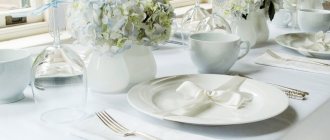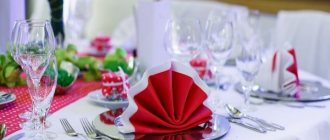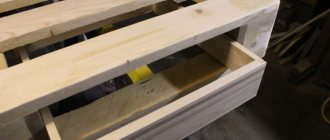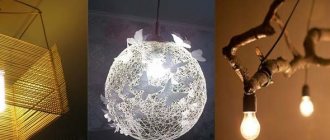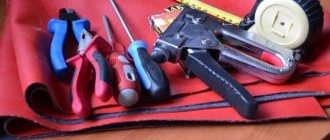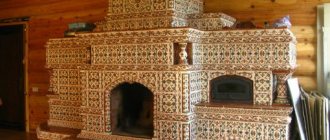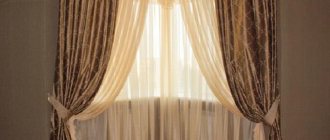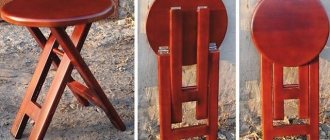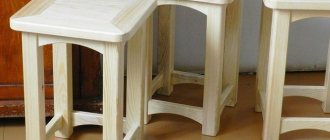Many people still don’t understand why napkins are needed on the table under plates in general and handmade napkins for the table under the plates in particular. Alas, this is a fact. However, having tried it once, just once having discovered the amazing world of home design and beautiful table settings, you are lost forever - and then you no longer ask yourself questions about why such things are actually needed. Then you begin to simply create and decorate the space around you in a manic way - including, of course, handmade napkins on the table under the plates. This is actually a very interesting topic! You can experiment and create endlessly - fortunately, there are a lot of materials around that can help in realizing the most incredible ideas. Would you like to get a little creative today and come up with something new for your home?
How to make napkins on the table under plates with your own hands - 5 master classes:
Table design features
Table setting is a creative, exciting process. All family members can participate. This activity can be turned into an interesting game. The process of decorating a festive table includes everything: from selecting a tablecloth to arranging cutlery. The latter include napkins. They are an important means of hygiene and help decorate a celebration. They must be purchased and placed according to certain rules.
Decorating models
Tablecloths and napkins can be sewn from thick natural fabric with light lace inserts with flowers added around the entire perimeter. A good addition to the models would be embroidery or appliqué.
You can find many accessories for napkins on sale.
The model with the addition of organza is luxurious, will beautifully decorate the table in the dining room, and will be an appropriate addition to a romantic dinner.
When choosing fabric for napkins, use pieces of material left over from making other products, for example, after making tablecloths.
We will show you how to quickly sew a tablecloth from organza or decorate napkins served on the festive table with it.
Even novice needlewomen of a young age can make such napkins with their own hands.
Organza inserts are usually sewn into the center of the tablecloth or used to decorate the corners of the overhang. A pattern with organza flowers will perfectly complement festive textiles.
Do-it-yourself napkins are most valued.
Choosing fabric
In shops and markets, textile products of different sizes, types, and price categories are sold for table setting. But it will be more effective to make cute napkins with your own hands. This is quite easy to do. The first stage of production is the choice of fabric. The fabric should be light, dense, wear-resistant. It must withstand a large number of washes and not lose its original appearance after several uses. Three types of fabric meet all of the above requirements. They are described in more detail in the table.
Fabric Advantages, disadvantages Cotton As an everyday textile, this is an ideal option. The cotton is not easily soiled, it is dense. It retains its shape and does not wash out. Can last for a long time. The cost of such material is acceptable. Mixed fabrics A practical, inexpensive option. These are fabrics consisting of synthetic and natural raw materials. The percentage of component input may vary. Thanks to mixing, the fabric combines all the advantages of natural and synthetic raw materials. It is wear-resistant. After washing, the material does not shrink. Linen is a natural, beautiful fabric. It has good absorbency and easily retains its shape even after ten washes. Flax is susceptible to starch. The product can be folded into various fancy shapes.
Materials and tools
The tools and materials needed to make napkins with your own hands can be easily purchased at any sewing store, and you probably have some of them at home:
- textile;
- dense threads;
- thin needle;
- scissors;
- sewing machine;
- iron;
- pen (for marking).
Interesting folding methods
It will be difficult to surprise guests with napkins modestly lying under the plate. Now it is fashionable to fold them into various shapes, flowers, and other extraordinary shapes. The following are the most popular options.
Lily
An original flower will decorate any holiday table.
The starting position of the fabric is folded in half diagonally. The left and right corners are aligned with the vertex of the original triangle. Then you need to fold it in half, just bend the top of the triangle located at the top.
Scheme for assembling a lily from a fabric napkin
South Cross
The Southern Cross is an interesting and very simple fabric napkin layout that will fit perfectly into the decor of the dining table.
The original shape is face down. Bend all corners one by one. They should be facing the center. Then you need to turn the square over and bend the corners again. Then the upper right corner should be pulled out, followed by all the others.
Method of folding napkins “Southern Cross” step by step
Megaphone
Megaphone - a very simple way to design a paper or fabric napkin
Stages of work
First, decide on the size of your future napkins. The most optimal option is 50 x 50 cm (workpiece size – 58 x 58 cm).
Next, mark the fabric and start cutting. All cuts should be as even as possible so that the napkins can be folded in different ways.
Place the pattern wrong side up. Fold the edges on all four sides 1.5 cm and press. Fold the edges in another 2.5 cm and press again.
Unfold all the folds and draw a line from the intersection of the folds at right angles to the diagonal of the napkin.
Cut the corner of the napkin along this line. 1.5 cm from the cut and stitch.
Before turning the sewn corners of the napkin right side out, you need to iron the fabric on each seam on both sides. Turn the corners right side out and stitch the edges of the napkin around the perimeter.
The finished napkin can be ironed and starched.
This article will tell you how to restore a chair using decoupage.
Read about how to make original seats for chairs here.
Accessories
To make napkins a real highlight of the table setting, they can be decorated with original accessories. Accessories can be different: flowers, feathers, clips, rings. With the help of such decorative elements you can create an incredible composition. Use the following guidelines when selecting accessories.
- You should not decorate the feast with artificial flowers. It looks cheap and unattractive. It is better to give preference to fresh flowers, even inexpensive ones. Chamomile, fragrant rose, delicate lily will help create an incredible atmosphere at the table.
- Textile products can be personalized. This idea is relevant when organizing a wedding or birthday. Personalized napkins will be a very pleasant surprise. You can embroider names on the material yourself. For this purpose, contrasting threads are usually used. Another option is to put names out of rhinestones. This is a great party idea.
- Rings are an exquisite accessory. It will become indispensable during a dinner party or an important business event. The advantage of rings is their durability. This accessory is made from durable raw materials. It can be stored in a closet at home, waiting for the right opportunity. Rings come in different sizes and colors. You need to choose a model based on the color of the tablecloth, the interior features of the room, and the table. Every detail of the decor should be in harmony with the serving. Special clamps can be an excellent alternative to rings. Clamps are made in different shapes and colors. They look quite elegant.
- Satin ribbons. Bright satin ribbons go well with beautiful textiles. This is the easiest, most inexpensive way to decorate a table. You just need to tie napkins folded into an interesting shape with ribbons. Additionally, the ribbons can be decorated with rhinestones. They are simply glued to the surface using quick-drying glue.
Do-it-yourself textiles or sewing fabric napkins
We strive to create comfort in our home. Tablecloths, towels, napkins, being an indispensable part of everyday life, additionally saturate the room with warmth and comfort. With the help of these interior elements you can transform the appearance of any room at any time.
Every housewife knows that the atmosphere in the house is created from the little things.
A tablecloth on the table will allow you to fully experience the atmosphere of family warmth and home comfort. In this article we will tell you how to sew napkins and tablecloths for the table with your own hands. Small household items, sewn by yourself, will add a unique personality to the decor of your home.
Ordinary napkins can transform the kitchen and turn everyday meals into cozy family feasts.
Rules for using cutlery
In order for the evening to be amazing, each guest and family member must follow certain rules of behavior at the table. We are taught this from early childhood. The child is taught how to hold a fork and use a spoon correctly. However, few people explain the rules for using napkins. They also exist.
The principle of processing the edges of a napkin
If you do not take into account the classic options for processing the edges of a napkin for table setting, then you can pay attention to the following methods:
- For a product made of linen or cotton, the edges can easily turn into fringe: to do this, just ruffle them with a needle.
- The classic option is to stitch the folded edges of the product.
- Less practical and durable is the method of gluing the edges using textile glue or web tape.
- Depending on the type of material, the edges are sometimes trimmed without turning. For this, decorative types of stitching are used.
Making table napkins with your own hands from fabric is quite simple if you use any of the presented edge processing methods. The main thing is to do the work carefully.
Sources:
https://berkem.ru/tekstil/tekstilnye-izdeliya-svoimi-rukami-ili-poshiv-tkanevyx-salfetok/ https://6sotok-dom.com/dom/mebel/stoly/kak-sshit-salfetki-dlya- servirovki.html https://samodelkinoblog.com/1582097839880670001/praktichnye-salfetki-iz-tkani-svoimi-rukami/
